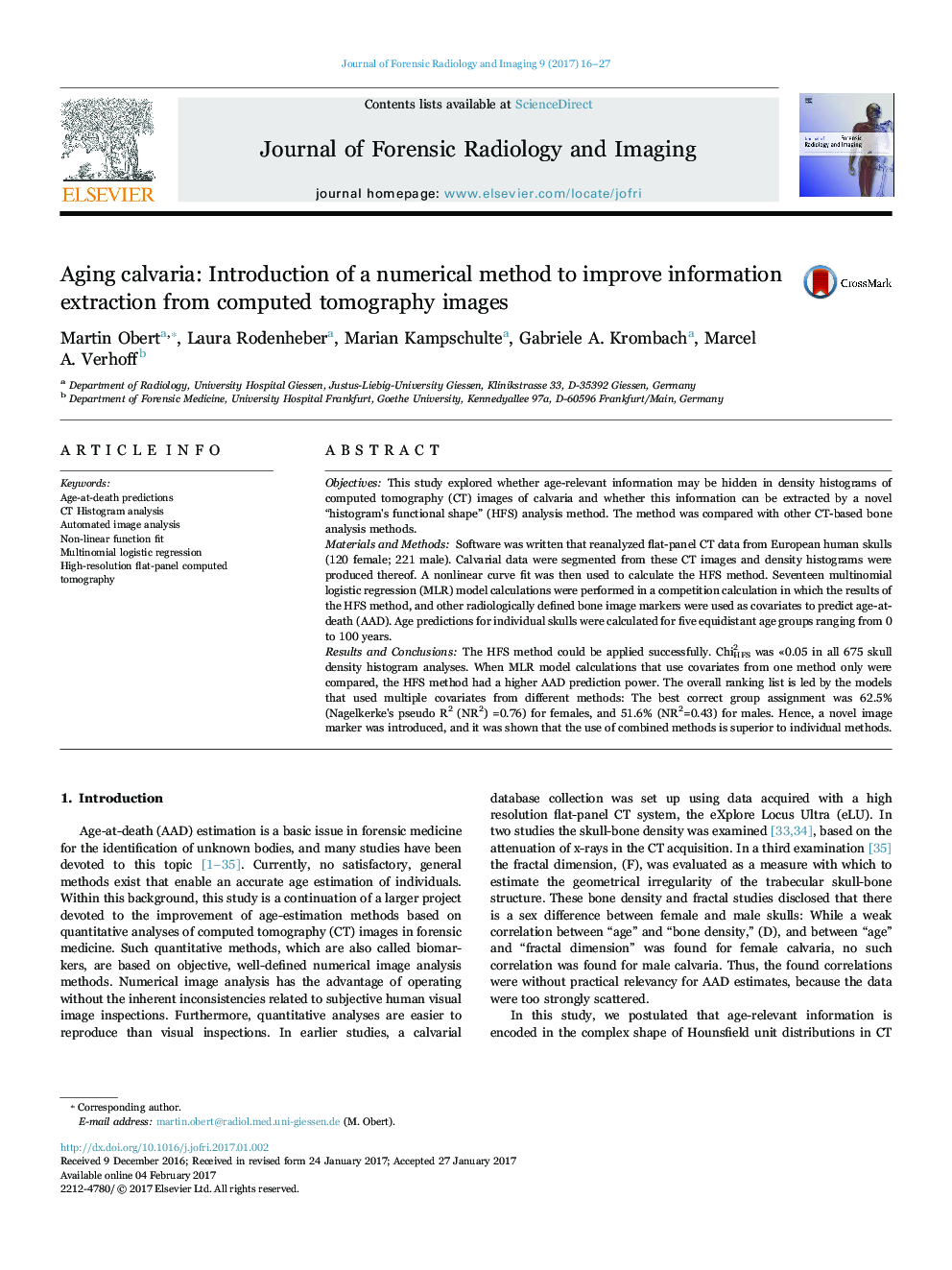| کد مقاله | کد نشریه | سال انتشار | مقاله انگلیسی | نسخه تمام متن |
|---|---|---|---|---|
| 6463075 | 1422456 | 2017 | 12 صفحه PDF | دانلود رایگان |
- The HFS method decodes age-relevant information encrypted in CT-density curves.
- HFS results have a higher age prediction power than bone density or fractal concepts.
- Multinomial logistic regression is a powerful tool to calculate age predictions.
- The more quantitative image markers are combined, the better the age predictions.
ObjectivesThis study explored whether age-relevant information may be hidden in density histograms of computed tomography (CT) images of calvaria and whether this information can be extracted by a novel “histogram's functional shape” (HFS) analysis method. The method was compared with other CT-based bone analysis methods.Materials and MethodsSoftware was written that reanalyzed flat-panel CT data from European human skulls (120 female; 221 male). Calvarial data were segmented from these CT images and density histograms were produced thereof. A nonlinear curve fit was then used to calculate the HFS method. Seventeen multinomial logistic regression (MLR) model calculations were performed in a competition calculation in which the results of the HFS method, and other radiologically defined bone image markers were used as covariates to predict age-at-death (AAD). Age predictions for individual skulls were calculated for five equidistant age groups ranging from 0 to 100 years.Results and ConclusionsThe HFS method could be applied successfully. Chi2HFS was «0.05 in all 675 skull density histogram analyses. When MLR model calculations that use covariates from one method only were compared, the HFS method had a higher AAD prediction power. The overall ranking list is led by the models that used multiple covariates from different methods: The best correct group assignment was 62.5% (Nagelkerke's pseudo R2 (NR2) =0.76) for females, and 51.6% (NR2=0.43) for males. Hence, a novel image marker was introduced, and it was shown that the use of combined methods is superior to individual methods.
Journal: Journal of Forensic Radiology and Imaging - Volume 9, June 2017, Pages 16-27
